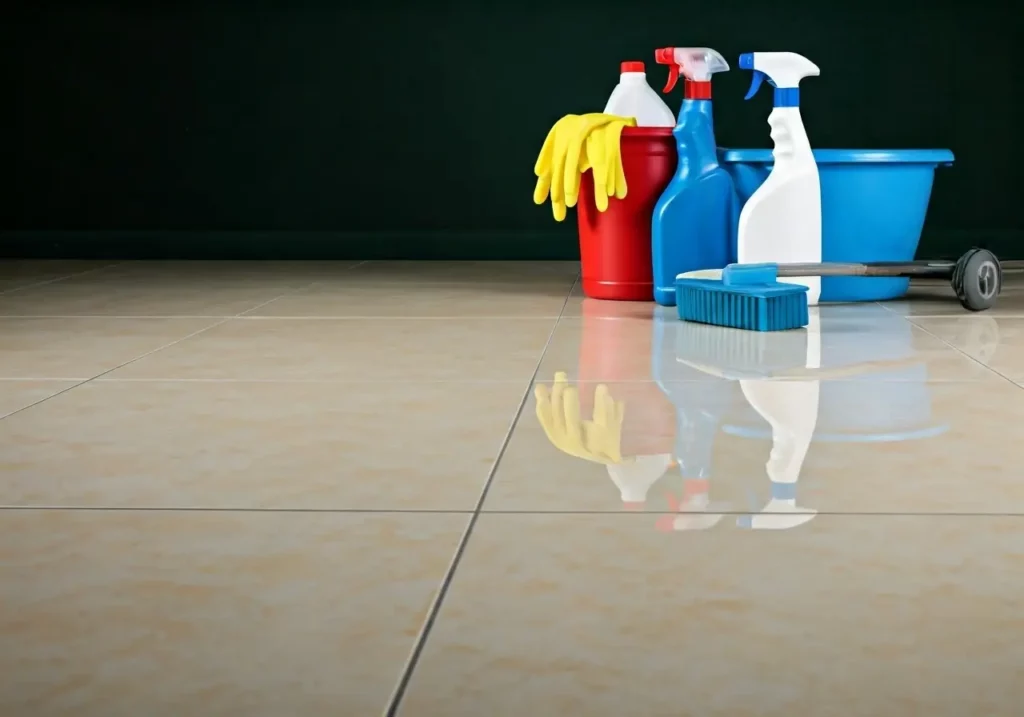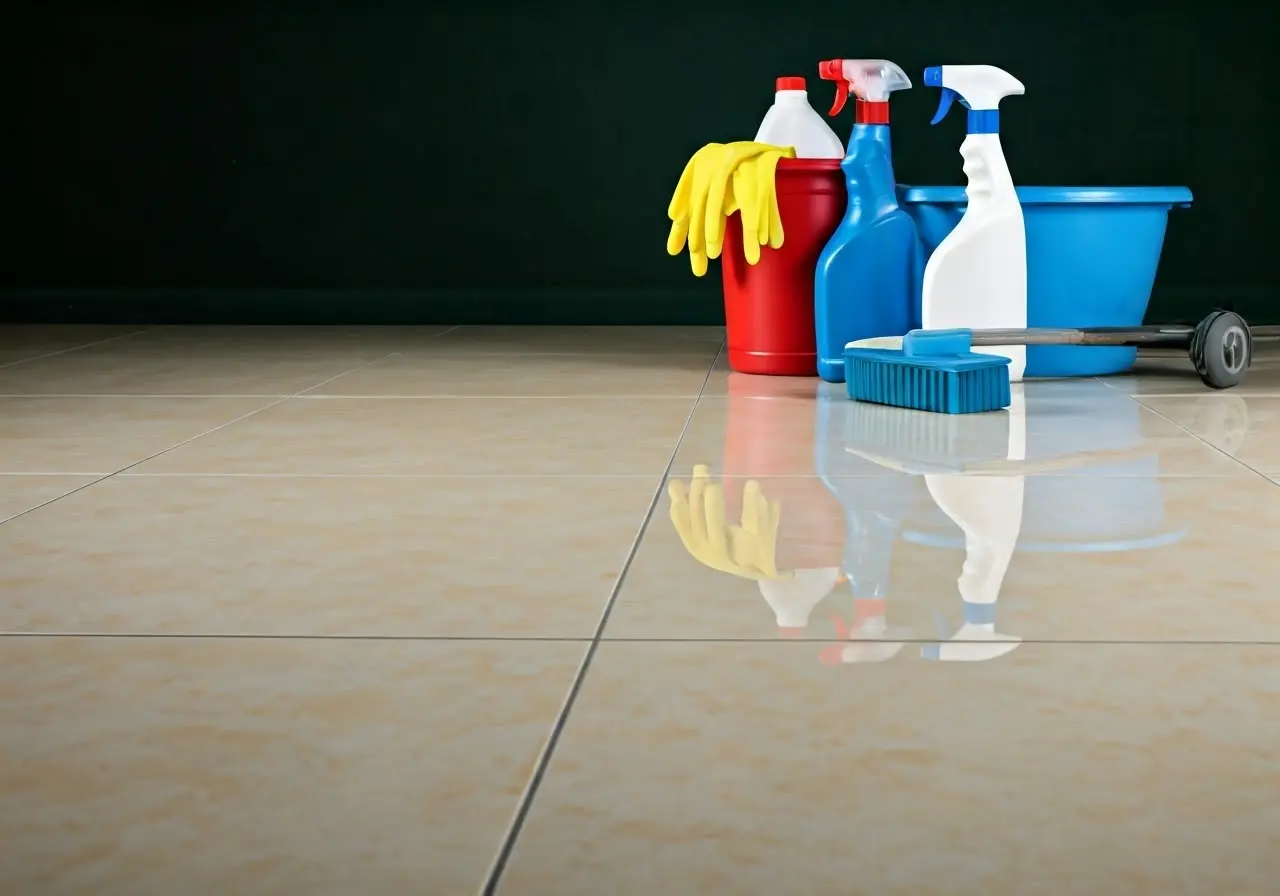Porcelain tile flooring is a popular choice for many homeowners due to its durability and stylish appearance. However, keeping it looking pristine requires some know-how. In this blog post, we’ll share twelve maintenance hacks that will help you maintain the beauty of your porcelain tile flooring with ease. Let’s dive in!
1. Regular Sweeping Is Essential
Regular sweeping is the first step in maintaining porcelain tile flooring. Dust and debris can cause scratches if not promptly removed. Sweeping daily with a soft-bristle broom helps to keep your floors scratch-free. For even better results, use a vacuum cleaner that’s designed for hard surfaces to get rid of fine dust particles. Make it a habit to sweep high-traffic areas more frequently to prevent the accumulation of dirt.
Skipping the sweeping step may seem like no big deal, but over time, dirt can become ingrained into the tiles, resulting in dull spots and visible wear. If you have pets, it’s even more crucial to sweep every day as pet hair and crumbs can be abrasive underfoot. Remember, the more consistently you sweep, the less deep cleaning you’ll need to do later on.
2. Use a Damp Mop for a Deeper Clean
A damp mop is perfect for enhancing the look of your tiles without causing any damage. Use warm water and a soft mop for the best results. Be sure to wring out the mop thoroughly to avoid over-wetting the floor, as excessive water can seep into grout lines and weaken them over time.
Add a few drops of mild dish soap or a specially formulated porcelain tile cleaner to the water for a more thorough clean. Always rinse the floor with clean water afterwards to remove any soapy residue that could attract dirt. Remember to dry your floor completely with a dry mop or towel to prevent water spots and streaks from forming.
3. Choose the Right Cleaning Solutions
Avoid harsh chemicals that can dull your tiles’ finish. Opt for pH-neutral cleaners specifically designed for porcelain. These cleaners gently lift dirt without damaging the tile or grout. If in doubt, test the cleaner on a small, inconspicuous area first.
Mixing your own cleaner at home can be effective too. Combine one-quarter cup of white vinegar with two gallons of warm water to create a mild yet powerful cleaning solution. Vinegar is a natural cleaner that helps to remove grime and disinfect without leaving a residue.
4. Address Spills Immediately
Be prompt with spills to avoid staining. A quick wipe with a damp cloth can prevent liquids from seeping into the grout and tiles. Spills that are left unattended can leave behind stains that are difficult to remove and may damage the grout over time.
For stubborn spills, such as wine or coffee, blot the area with a paper towel to absorb as much liquid as possible. Then gently clean the area with a pH-neutral cleaner and a soft cloth. This quick action can save you from dealing with unsightly stains later.
5. Utilize Door Mats to Reduce Dirt
Placing door mats at entrances can significantly reduce the amount of dirt and grime tracked onto your porcelain tile flooring. Choose high-quality mats that can capture dirt effectively. Place one mat outside the door and one inside to catch any excess dirt.
Regularly clean these mats to maintain their effectiveness. Shake them out or vacuum them weekly, and wash them according to the manufacturer’s instructions. A clean mat will do a better job of keeping your floors cleaner for longer.
6. Pay Attention to Grout Lines
Keep grout lines clean with a baking soda and water mixture. Use a small brush to scrub gently and rinse thoroughly. This natural cleaning method helps to remove dirt and discoloration without damaging the grout.
For heavily stained grout lines, consider using a specialized grout cleaner. Be sure to follow the instructions on the product carefully. Regular cleaning of grout not only keeps your floor looking fresh but also prolongs the life of the grout.
7. Avoid Dragging Furniture
Lift furniture instead of dragging it to prevent scratches and cracks on your floor tiles. When moving heavy items, use furniture sliders or pads to minimize the strain on your tiles. This simple practice can save you from the trouble and expense of repairing scratched or damaged tiles.
For frequently moved items like dining chairs, consider adding felt pads to the legs. These pads are inexpensive and easy to attach and can significantly reduce wear on your floor. Regularly check and replace the pads as needed to ensure their effectiveness.
8. Use Protective Pads Under Furniture
Protective pads under furniture legs can help prevent marks and scratches on your tiles. They provide a cushion between the heavy furniture and the tile surface, distributing the weight more evenly.
These pads come in various shapes and sizes to fit any type of furniture. It’s a small investment that can make a big difference in maintaining the appearance of your floor. Remember to clean the pads regularly as accumulated dirt can also scratch the tiles.
9. Seal Grout Lines
Sealing the grout lines can prevent moisture and dirt from penetrating, keeping them clean and intact. Sealing grout adds an extra layer of protection and makes cleaning much easier.
Grout sealers are available in both spray and brush-on forms. Follow the manufacturer’s instructions for application and reapply as recommended, typically every six months to a year. Sealed grout is less likely to stain, ensuring your floor stays looking new for longer.
10. Avoid Abrasive Cleaning Tools
Steer clear of abrasive brushes and scrubbers that can scratch the tile surface. Instead, opt for soft cloths and sponges. Porcelain tiles are tough, but abrasive tools can still cause scratches that dull their shine over time.
When dealing with tough spots, use a non-abrasive cleaning pad or a soft-bristled brush. Always test any new cleaning tool on a small, inconspicuous area first to ensure it doesn’t damage the surface.
11. Regularly Polish Tiles for Extra Shine
Polishing your tiles occasionally can enhance their natural shine and keep them looking vibrant. Use a product specifically designed for porcelain tiles to avoid any potential damage.
Remember, not all tiles need polishing, so check the manufacturer’s recommendations. Regular polishing can reduce the appearance of small scratches and keep your tiles gleaming like new.
12. Inspect and Repair Any Damage Promptly
Regularly inspect your flooring for any signs of damage and repair promptly to prevent further issues. Tiny cracks or chips can grow over time if left unattended, leading to more significant problems and costly repairs.
If you find a damaged tile, consider replacing it quickly. Matching spare tiles from your initial installation can make the repair process easier and ensure a seamless look. This proactive approach will help maintain the overall elegance and durability of your porcelain tile flooring.


